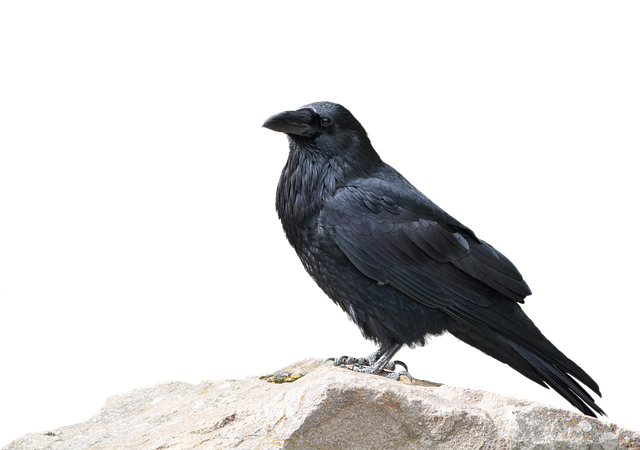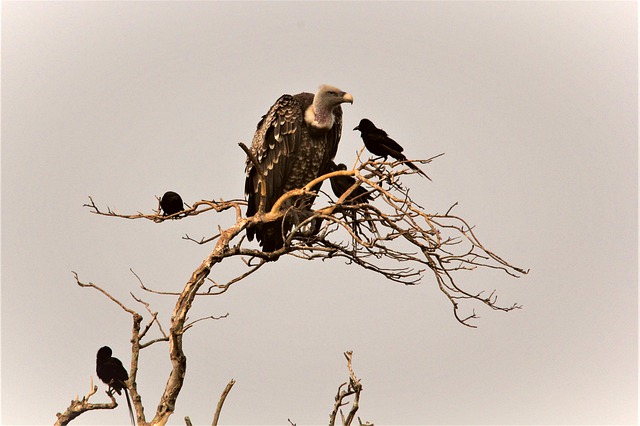Crows are enthralling creatures. They are gorgeous when floating across the sky, but they also have a menacing air. For decades, crows have appeared in suspense and horror films. Crows have also been known to attack people who appear to be going about their business.
Human assaults, on the other hand, are uncommon, so there’s no need to be alarmed if you see crows. The birds you can’t see are the ones to be concerned about. When you see a large group of crows, you may wonder why they gather and caw.
Crows, which belong to the Corvidae family, are extremely gregarious birds with close-knit family systems that roost in enormous numbers.
Various factors may lead crows to congregate in large numbers, ranging from social behavior to defensive measures. Continue reading to understand why crows gather and what it implies when they do.
Why Do Crows Gather and Caw?

There are a variety of possible responses to this question. Seeing a large group of crows gather simultaneously, whether they constitute a threat or not, may be a little unnerving.
Why do crows gather in huge groups? Is it only to frighten the people, or is there more to it? It seems that crows may gather in huge numbers for various reasons.
Here’s the list of the following,
- Roosting
- Crows need to get warm
- Predators
- Grieving
- Travel together
- Sharing shelter
- Mobbing
- Stealing food
1. Roosting
Crows gather in great numbers for various reasons, one of which is to roost. The act of brooding is the action of relaxing as the sun goes down. This is the time of year when the bird likes to sleep without fear of predators or other threats.
Crows prefer to roost in big groups because it is safer for them. When a large number of crows gather, the likelihood of threat increases. Roosting crows like to sit on the tops of trees, where they may be seen or not.
They might caw for a time before sleeping to alert other crows to their location. Some roosting packs might contain tens, hundreds, and even thousands of crows at any given moment.
2. Crows need to get warm
Depending on the time of year, crows can become chilly like every other animal.
They gather to produce extra heat and enhance the quality of life whenever the weather outside turns frigid. They frequently stand close to one another. Based on where they will be gathered, they may remain in lines or groups.
3. Crows feel vulnerable
Another cause crows may gather in huge numbers is if there is danger nearby.
Crows may notice a threat and scream out to one another, allowing them to locate one another and form a group. This makes them less appealing to predators and boosts their chances of fending them off.
Any predators in the vicinity will be scared away by a huge group of crows making noise.
4. Crows are Grieving

Crows are clever birds, so it should not surprise that if one of them dies, they gather in great numbers. These animals, according to researchers, do it to assess the level of risk in the environment.
According to some studies, crows have even been observed to indulge in pedophilia with their deceased. While it may appear that all these birds are mourning when they cluster around a deceased flock member, their sentiments often are likely motivated by a fear of being attacked.
5. Crows like to Travel Together
Crows enjoy traveling in groups, so it’s only natural that they might take breaks together. A flock of crows may appear to land on a power cable or even in a bush for several moments, then take off simultaneously in flight.
This is most likely because they are traveling to a distant location and want to relax or regain their bearings before continuing. Because crows can travel vast distances without stopping, one of the less typical motivations for big flocks of crows is travel.
6. Crows Share Shelter and Warmth
The capacity to share shelter and warmth is another major factor for crows sleeping in groups.
Crows like protected urban habitats with communal sleeping areas that give extra warmth and protection from the weather. By traveling into these protected resting spots at night, they obtain a few more warmth and wind protection levels, rendering it that much simpler to preserve energy over the long winter.
This makes sense that communal sleeping units are mostly employed from late fall to early spring when the weather is the coldest and darkest. So group roosting crows are probably likely motivated by the need for refuge and warmth.
7. Crowds Gather to Exchange Information About Food

Crows seem to be sharing information to assist the group in identifying bountiful food sources the next day, according to an intriguing revelation concerning nightly crow gatherings. This is significant because crows have a far harder time finding food in the winter than in the summer.
Insects, worms, and cold-blooded organisms do not exist. In a winter environment, though, crows may still locate lots of high-value meals if they can just discover the appropriate opportunity
8. Crow Funeral

During funerals, crows may assemble to learn about threats rather than mourn the deceased.
Crow funerals, according to researchers, are a mechanism for birds to “communicate” about harmful situations to avoid them. The ceremony was done during a crow funeral: The birds gather in the trees during a crow funeral. Even as minutes later, more crows arrive, cawing ferociously.
When crows screech at its deceased member and spectators, it’s frightening. The crow takes flight, but if they encounter the person they believe is responsible for their friend’s or family member’s death, they revert to mobbing behavior.
According to researchers, the image of a person carrying a dead crow stimulates the hippocampus, that region of the brain that responds to fear. Later, necrophilia and cannibalism show that crows lack their feelings of self during the mating season due to their hormones.
9. Crows Gather to Steal
When a high-energy food item can be easily stolen, such as fish or meat, crows will gather in large flocks. Crows will band together to take food from eagles, hawks, and sea eagles, and the displays of frantic cawing and chasing across the sky are typical sights.
However, unlike the thousands of crows who gather for nighttime roosting, these food snatching groups often consist of around 5-30 birds. Food theft may come at any stage of the year and any hour of the day, so it’s critical to notice this activity when you want to be sure just what crows are up to.
10. Crows Gather in Response to a Predator
The most typical reason crows gather and create all sorts of sounds is because there is a predator nearby, such as an eagle, hawk, or eagle. This is surprisingly frequent, and even a small group of 5-10 crows making loud cries in a tree may be rather captivating.
During the mating season, whenever a clan of crows drives away competing crows or ravens, very identical groupings might occur as territorial behavior. Crows’ territorial and alarm actions are very identical, although the explanation is typically obvious.
11. Mobbing
The term “mobbing” refers to when smaller birds band together to fend off larger birds.
Many bird species engage in this activity, similar to calling for aid from family members.
Many crows band together against a greater menace that may threaten them in its breeding territory to evict such birds from their territory. They create a group and harass the huge bird until it leaves. These crows band together to fight huge birds like eagles, hawks, raptors, and other raptors.
If you are wondering Can Crows Talk? or What Do Crows Eat? then check these articles.
Conclusion
Crows are extremely intelligent and are capable of recognizing human faces. They might harbor grudges and warn other flock members about us if we treat them badly. As a result, it’s not unusual that they’d assemble in big numbers for a variety of reasons.
The reasons for such reunions, on the other hand, might be unexpected, especially concerning coping with their deceased. Have you noticed any crows congregating in significant numbers recently, and if so, did you notice any hints as to why they were doing so?
FAQ
What does it mean crows gather?
Crows are social animals and gather to communicate for food, grieving, mobbing, and roosting. They also enjoy communal sleeping.
What is a Murder?
A group of crows is called a murder.
Why do crows gather in a circle?
Crows gather in a circle when they spot some potential prey/food or while they are hunting.
Last Updated on March 22, 2023 by Lily Aldrin


I saw a murder of crows, hundreds, in a soy bean field, next to my house on July 2. In Allenton, MI 48002. I had never seen such a large gathering at this time of year?